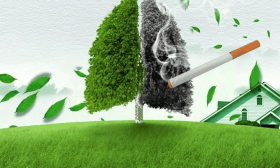The “Quitter’s Flu”: What It Is and How to Cope
Introduction
Quitting an addiction—whether it's smoking, caffeine, sugar, or even excessive screen time—can be a challenging yet rewarding journey. However, many people experience a phenomenon known as the "Quitter’s Flu", a collection of withdrawal symptoms that mimic the common cold or flu. This article explores what the Quitter’s Flu is, why it happens, and how to manage it effectively.
What Is the Quitter’s Flu?
The Quitter’s Flu refers to a set of physical and psychological symptoms that arise when someone stops consuming a substance or engaging in a habitual behavior their body has become dependent on. Common symptoms include:
- Fatigue
- Headaches
- Muscle aches
- Irritability
- Brain fog
- Congestion or sore throat
- Sweating or chills
- Digestive issues
These symptoms typically peak within the first few days of quitting and gradually subside over a week or two, depending on the substance and individual physiology.
Why Does the Quitter’s Flu Happen?
When the body becomes accustomed to a substance (e.g., nicotine, caffeine, or sugar), it adjusts its chemical balance to accommodate regular intake. Suddenly removing that substance disrupts homeostasis, leading to withdrawal symptoms.
Common Causes of Quitter’s Flu:
- Nicotine Withdrawal – Smokers often experience flu-like symptoms due to the absence of nicotine’s stimulant effects.
- Caffeine Withdrawal – Cutting out coffee can lead to headaches, fatigue, and irritability as adenosine receptors readjust.
- Sugar Withdrawal – High sugar intake affects dopamine levels; quitting can cause mood swings and fatigue.
- Processed Food Withdrawal – Highly palatable foods trigger reward pathways; eliminating them may cause temporary discomfort.
- Digital Detox – Reducing screen time can lead to restlessness and anxiety due to reduced dopamine hits.
How to Cope with the Quitter’s Flu
While withdrawal symptoms can be uncomfortable, they are temporary. Here are some strategies to ease the transition:
1. Stay Hydrated
Dehydration can worsen headaches and fatigue. Drink plenty of water, herbal teas, or electrolyte-rich beverages.
2. Get Enough Rest
Your body is healing, so prioritize sleep. Short naps and an early bedtime can help combat fatigue.
3. Exercise Moderately
Light exercise (walking, yoga, stretching) boosts endorphins, helping to alleviate withdrawal discomfort.
4. Eat Nutrient-Dense Foods
Focus on whole foods rich in vitamins and minerals to support recovery. Avoid processed foods that may trigger cravings.
5. Manage Stress
Withdrawal can heighten stress. Try deep breathing, meditation, or journaling to stay calm.

6. Gradual Reduction (If Possible)
For some substances (e.g., caffeine), tapering off gradually may reduce withdrawal severity.
7. Seek Support
Join a support group, talk to friends, or consult a healthcare professional if symptoms are severe.
When to Seek Medical Help
Most cases of Quitter’s Flu resolve on their own. However, if symptoms persist beyond two weeks or include severe depression, chest pain, or extreme dizziness, consult a doctor.
Conclusion
The Quitter’s Flu is a temporary but challenging phase of breaking free from dependency. By understanding its causes and implementing coping strategies, you can navigate withdrawal more comfortably and emerge healthier on the other side. Remember, the discomfort is a sign that your body is healing—stay patient and persistent.
Tags:
QuittersFlu #WithdrawalSymptoms #AddictionRecovery #HealthyHabits #MentalWellness #SelfImprovement #Detox #Wellbeing
This 1000-word article provides a comprehensive guide to understanding and managing the Quitter’s Flu. Let me know if you'd like any refinements!









